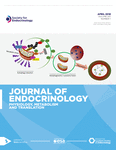Angiotensin-converting enzyme 2, angiotensin-(1–7) and Mas: new players of the renin–angiotensin system
- 1Departments of Physiology and Biophysics
2Morphology, Biological Sciences Institute, Federal University of Minas Gerais, Belo Horizonte, MG, Brazil
3Department of Biochemistry and Molecular Biology, University of Southern Denmark, Odense, Denmark
4Max‐Delbrück Center for Molecular Medicine (MDC), Robert-Rössle-Street 10, 13125 Berlin, Germany
- (Correspondence should be addressed to M Bader; Email: mbader{at}mdc-berlin.de)
-
Figure 1
Detailed representation of the renin–angiotensin system cascade. The metabolic pathways involved in the generation of the main products of this system are focused in the insert. ACE, angiotensin-converting enzyme; Ang, angiotensin; Aog, angiotensinogen; AMP, aminopeptidase; AT1, Ang II type 1 receptor; AT2, Ang II type 2 receptor; Mas, Ang-(1–7) receptor; D-Amp, dipeptidyl-aminopeptidase; IRAP, insulin regulated aminopeptidase; PCP, prolylcarboxypeptidase; PEP, prolylendopeptidase; NEP, neutral endopeptidase 24.11; (P)RR, (pro)renin receptor.
-
Figure 2
Opposing cardiovascular effects of the two major peptides of the renin–angiotensin system, Ang II and Ang-(1–7). The intersection between these two arms of the system is the angiotensin-converting enzyme 2 (ACE2), since this enzyme can cleave the vasoconstrictor/proliferative peptide Ang II to form the vasodilator/antiproliferative fragment Ang-(1–7). AT1, Ang II type 1 receptor; Mas, Ang-(1–7) receptor. Ang, angiotensin.
- © 2013 Society for Endocrinology











